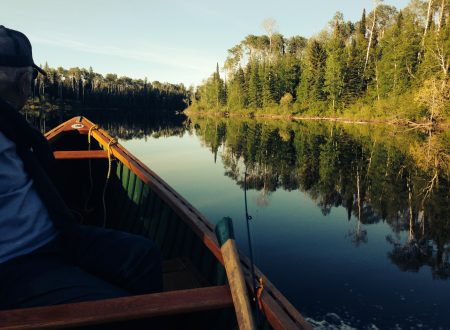In late June 2016, the Federal Court of Appeal, in a split decision, (Gitxaala Nation v. Canada) quashed the approval of Northern Gateway Pipeline, because of insufficient consultation with First Nations. The case was a consolidation of cases brought by a number of First Nations – some whose territory would be crossed by the pipeline, and quite a number of coastal First Nations concerned about the risks of oil tanker traffic. The First Nations claimed that they had not been adequately consulted about the project, as is legally required when a Crown decision impacts Aboriginal rights or asserted rights. The Court ruled that the decision to approve the project was reasonable from an administrative law perspective, and that it was unobjectionable that part of the Aboriginal consultation was done within the National Energy Board (NEB) process. However, there were gaps in the Aboriginal consultation process, which were covered in neither the NEB process nor in the Crown consultation process that followed the NEB process.
This decision has intriguing legal and political implications, stemming from the way the former Conservative government changed the rules in 2012 about pipeline approvals. The present choices before the present Liberal government in the aftermath of this ruling will also have high symbolic significance. Understanding these requires some background.
More precisely, the Court quashed an Order in Council which directed the NEB to issue Certificates of Public Convenience and Necessity (CPCNs) for Enbridge’s Northern Gateway project, which proposed to build 2 pipelines from Alberta to the coast of British Columbia, and an oil tanker terminal at Kitimat, B.C. The Court considered this cabinet decision to be the real and operative decision. The Court dismissed challenges to the report of a joint review panel (the “Panel”) under the Canadian Environmental Assessment Act and the National Energy Board Act, because the Panel did not actually decide anything. Nor did the Court analyze separately the issuing of the CPCNs by the NEB because the NEB had no real decision-making power.
This reflects the decision-making scheme laid out in legislation. In fact, in 2012, during the consideration of Enbridge’s application, the process was changed to give cabinet the power to approve a project even if the NEB had recommended it not proceed, and to speed up the process. The key parts of the decision-making scheme were that the Panel was established to consider both the public desirability of a pipeline, and to perform an environmental assessment of the project. The Panel issued a report in December 2013 which recommended the project proceed subject to 209 conditions. It did express the view that there were some significant adverse impacts of the project, in combination with other activities, but that these were justified in the circumstances. Cabinet approved the project in June 2014, with the conditions recommended by the Panel, and directed the NEB to issue the CPCNs. This was of the nature of an approval in principle, and many further specific approvals and permits will be required if the project goes forward.
Canada also explicitly established a five phase Aboriginal consultation process for the project. The first three phases related to the Panel hearings, in which Aboriginal groups were encouraged to participate and in which many did. The fourth phase, which the Court considered critical, was consultation by the Crown after the Panel report, and before the cabinet decision. A fifth phase would relate to the many specific approvals and permits that would be required if the project goes ahead.
In the background, although the Court does not discuss it, the proper role of the NEB in Aboriginal consultation is an open question, and is at the core of two cases now pending before the Supreme Court of Canada (Chippewas of the Thames First Nation v. Enbridge Pipelines Inc. and Hamlet of Clyde River v. Petroleum Geo-Services Inc., both scheduled to be heard November 30, 2016). This, however, is probably a factor in why the Court considered Phase 4 of the consultation process to be critical. Phase 4 was an opportunity to fill any gaps that might be left by the NEB (or in this case the Panel) process.
The Court considered many possible arguments about the legality of the cabinet decision. It found, for example, that the standard of review for the decision was reasonableness, and that the decision was reasonable in the administrative law sense, given the broad issues of public policy that were involved. The issue of Aboriginal consultation and accommodation, however, required further analysis. The Court interpreted the legislation as giving cabinet the power (and duty) to decide if the Crown’s duty to consult and accommodate had been fulfilled. The Court’s analysis was that the duty had not been properly fulfilled, and that it was not satisfied that cabinet had even considered this issue.
The Court was satisfied that the overall structure of the five phase consultation process was acceptable – the Court thought the Crown had discretion how to structure this, and had acted reasonably in so doing. The Court also rejected an argument that the process had been “over-delegated” by incorporating some of the Aboriginal consultation into the Panel process. It is acceptable for the Crown to delegate portions of the consultation process. What matters more is that the consultation and accommodation is done, than who does it. The Court did note that the mandate of the Panel was significantly narrower than the scope of the Crown’s duty. Here the Court noted that phase 4 of the consultation process featured direct consultations by the Crown, so this was an opportunity to fill gaps left by the Panel process.
The factors relied on by the Court in deciding that the duty to consult and accommodate had not been fulfilled included that: the timing of phase 4 was rushed; First Nations were not provided with information they requested on the scientific assessment of the risks of oil spills and their mitigation; the consultation report inaccurately stated the positions of some First Nations; there was a lack of meaningful dialogue in phase 4 – Canada’s representatives were mandated only to collect information; and Canada would not share its position about the strength of the First Nations’ claims to Aboriginal title.
Given the importance of the Aboriginal rights claimed and the significance of the potential impacts, the Court thought this was a case that required deep consultation, including reasons which show that Aboriginal concerns had been considered, and had made some impact on the final decision. The cabinet decision itself gave only the most passing reference to Aboriginal consultation; the consultation report (on which cabinet presumably relied) was inaccurate at key places; and Canada had invoked cabinet secrecy over what materials were actually before cabinet. Therefore the Court was not satisfied that cabinet had even considered whether or not the duty to consult and accommodate had been fulfilled.
In the result, the Court found that the Phase 4 consultation itself had too many gaps, with the result that the Crown’s duty to consult and accommodate had not been met. The Court quashed the cabinet decision, and remitted the matter back to cabinet.
There are intriguing consequences of this case, both for legal doctrine and for the political next steps.
For legal doctrine, it would seem that the Court is signalling that it is indeed legally possible to make cabinet the final decision-maker, and able to make decisions purely on political and ideological grounds without reference to technical and scientific facts. This indeed was the transparent intent of the 2012 amendments to the decision making process at issue in this case. However, if decisions are structured this way, it comes with the duty for cabinet to consider matters of Aboriginal consultation and accommodation, and the duty to demonstrate that it has done so reasonably. If Canada continues to shield cabinet discussions with absolute secrecy, it is unlikely that this can be demonstrated.
There are a number of possibilities for the next steps regarding Northern Gateway. Canada could seek leave to appeal the decision to the Supreme Court of Canada. In my view this is unlikely. It would be hard to square an appeal with the Liberal government’s professed priority on reconciliation with First Nations. It would also be hard to square defending the present process, which affords almost absolute primacy to politics and ideology, with the Liberals’ commitment to make evidence-based decisions. Further, the decision does not really tie Canada’s hands very far – if cabinet wishes to approve the project, it need only re-do phase 4 of the consultation and make a more transparent decision. The Court suggested that a re-do of phase 4 need only take perhaps 4 months. Another possibility is that cabinet might not approve Northern Gateway – either as a symbol that it is taking reconciliation with First Nations seriously, or a symbol that it is taking climate justice issues seriously, or because it prefers a different pipeline instead.
Related Posts

AANDC's ATRIS database has dangerous gaps in data
On September 23, AANDC announced the launch of its Aboriginal and Treaty Rights Information System (ATRIS). Minister Valcourt stated that ATRIS is supposed to “enable people across Canada to access…
Read More...
The Legal Imperative: Must versus Shall
(Posted March 11, 2021)
In normal conversation, if I tell you that you must do something, that would be understood as an imperative command. However, lawyers have undergone years of…
Read More...
Bill C-15 (UNDRIP Act) Commentary
PDF version available here. …
Read More...

